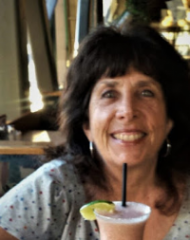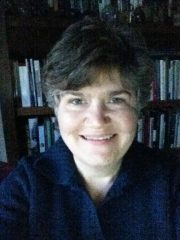By Nita Sweeney, author of Depression Hates a Moving Target
I’m embarrassed to admit how little I appreciated the importance of book reviews until my own book, Depression Hates a Moving Target, was published. Before that, I posted the occasional review on Goodreads and didn’t even know that some publisher sites (including Mango) accept reviews. I rarely left a review on Amazon.
How times change. Now I am ever-so-slightly obsessed with (I’m always obsessed with something) checking all those sites for reviews of my book. And I’ve gone so far as to spend your precious time telling you about it.
Why Leave a Review?
So just why should a person, especially a busy person with lots of competing interests and precious little time or energy, a person such as you, review the books you read?
- To Remember the Book
I’ll go ahead and date myself. I’m old enough that I sometimes forget I’ve read a book, even if it seemed “memorable” at the time. It’s a bit frightening, but also enlightening to scan a review I’ve written. It refreshes my recollection and sometimes makes me want to read the book again.
- To Forget the Book
Perhaps it’s part of my mental health challenge, but I don’t think I’m alone here. If I read a deeply moving (or deeply disturbing) book, I get “stuck” in the story. Characters and scenes stroll and scroll through my mind when I should be doing other things. Often I can’t sleep. I toss and turn, trapped by the book. But if I write a review, capturing the essence of what is looping through my mind, it releases me and helps me move on.
- To Keep Yourself Honest
Many of us skim when we read. I’m no different. But in order to leave a detailed review, I must read deeply. If I want to review the book, I allow myself to slow down, sink in, and really pay attention. As a result, reading regains a pleasure it once lost.
- To Share Your Joy (or Pain)
If I enjoy a book, I want other readers to know. If I detest a book, I want other readers to know. If I didn’t finish a book, I want other readers to know that too. Having said that, I do my best not to pan a book just because it wasn’t what I expected. I’m referring to the 3-star review Marko Kloos received because his novel wasn’t a 36-count package of Jimmy Dean sausages.
- To Applaud the Author
I’ve always loved authors. Since my earliest days, people who created books out of thin air were my heroes. But now that I have personally gone through the entire process of not just writing a book and finding a publisher, but also marketing the book, I hold other authors in even higher esteem. I want to shout from the rooftops, “You did a really difficult thing! Great job!”
What Makes a “Good” Review?
As a published author, I appreciate the numbers game. Any positive review is lovely and a review of more than two sentences feels like a gift. But the reviews that stay with me are the ones in which the reader shares something personal about themselves and how the book made them feel. One reviewer said “Nita is inside my head.” Another wrote, “I had to stop at the end of one paragraph and call my mom.” Personal connections like these bring me to tears.
When I write reviews now, I remember how it felt to read reviews of my own book. I search for a place where I connect deeply with the book and share that with the author. This type of review achieves all the things I listed above and writing it feels fabulous since it provides the opportunity to cheer someone else along this twisting, winding, writing path.
[This article originally appeared in Nita’s blog, Bum Glue.]

Nita Sweeney is the author of the memoir, Depression Hates a Moving Target: How Running with My Dog Brought Me Back from the Brink, which was short-listed for the William Faulkner – William Wisdom Creative Writing Competition Award and the Dog Writers Association of America Award. Her articles, essays, and poetry have appeared in magazines, journals, books, and blogs including Buddhist America, Dog World, Dog Fancy, Writer’s Journal, Country Living, Pitkin Review, The Taos News, Spring Street, Pencil Storm, WNBA-SF, It’s Not Your Journey, and in several newspapers and newsletters. She writes the blog, Bum Glue, publishes the monthly e-newsletter, Write Now Columbus, and coaches writers in Natalie Goldberg style “writing practice.” Nita has been featured widely across media outlets about writing, running, meditation, mental health, and pet care. She was nominated for an Ohio Arts Council Governor’s Award and her poem, “Memorial,” won the Dublin Arts Council Poet’s Choice Award. When she’s not writing or coaching, Nita runs and races. She has completed three full marathons, twenty-eight half marathons (in eighteen states), and more than ninety shorter races. Nita lives in central Ohio with her husband and biggest fan, Ed, and their yellow Labrador running partner, Scarlet the #ninetyninepercentgooddog.



 An extract from Heart, Sass & Soul: Journal Your Way to Inspiration and Happiness
An extract from Heart, Sass & Soul: Journal Your Way to Inspiration and Happiness 

 About Nita Sweeney
About Nita Sweeney About Cheryl Leutjen
About Cheryl Leutjen By Margarita Tartakovsky, MS
By Margarita Tartakovsky, MS
